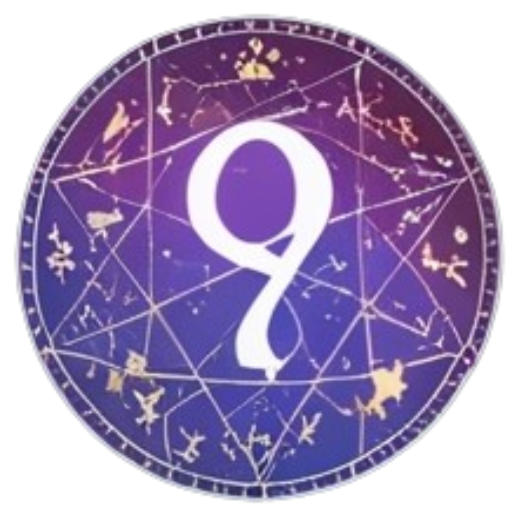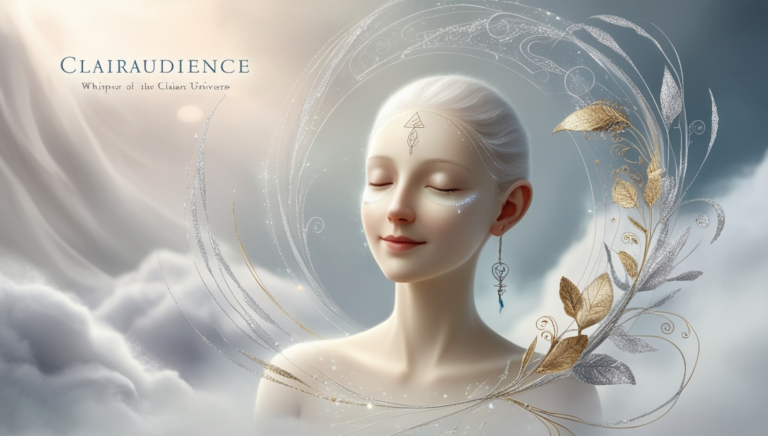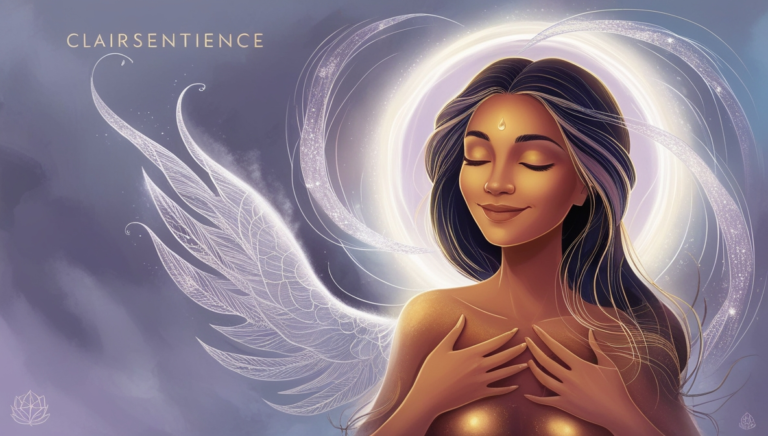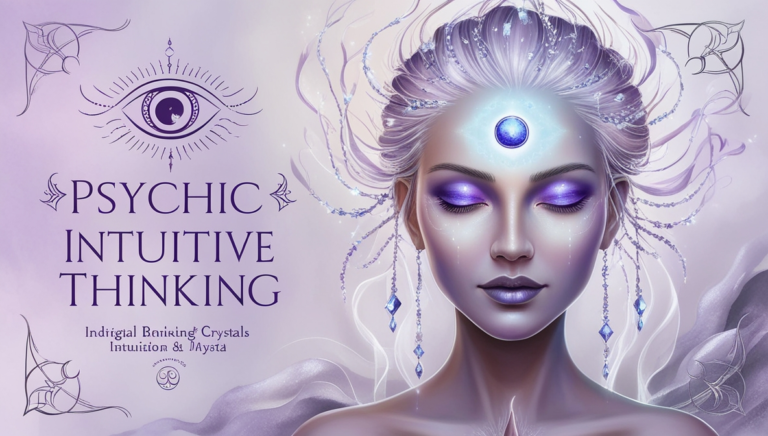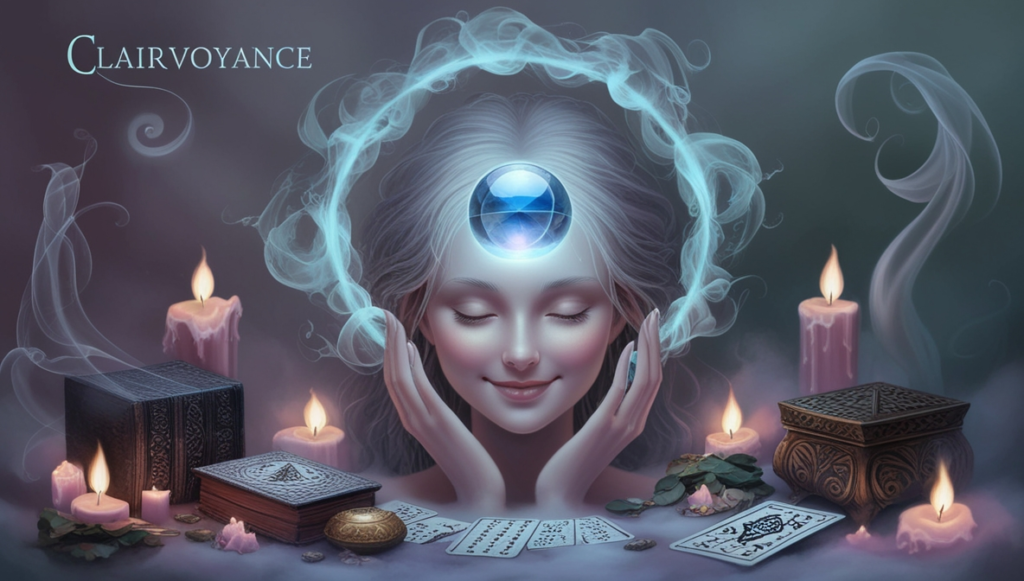
Clairvoyance is a term derived from the French words clair meaning «clear» and voyance meaning «vision,» describing the ability to «see» beyond the ordinary senses. Those with clairvoyant abilities can perceive information about a person, place, or event without using the standard five senses. Clairvoyants may experience visions, symbols, colors, or even entire scenes that convey intuitive information, often feeling as though they’re seeing into the past, present, or future. This ability is one of the most recognized psychic abilities and holds a deep fascination in the realms of spirituality and intuitive work. Discover more about psychic empath or what is psychic?.
In this article, we’ll explore what clairvoyance truly means, how it works, signs that you may possess this gift, and techniques for developing it further.
What is Clairvoyance?
Clairvoyance is often referred to as «clear seeing» because it involves an extrasensory perception that brings visual insight. Unlike our normal sight, clairvoyant vision can reveal information that isn’t visible to the naked eye. These visions might be subtle, like flashes of light or color, or more vivid, such as images or scenes that appear like a mental movie.
People with strong clairvoyant abilities may see things that reveal hidden aspects of a situation, including symbolic images, colors associated with energy or emotion, or scenes showing possible future events. Some clairvoyants can also “see” energy fields, such as auras, and even connect with spiritual entities.
How Does Clairvoyance Work?
Clairvoyance is believed to work through the Third Eye, an intuitive center located in the middle of the forehead, often linked to the pineal gland. This energetic center is associated with insight, intuition, and spiritual perception. When someone has a highly active Third Eye, they might experience flashes of insight, sudden images, or visions that provide valuable guidance.
While each person’s experience with clairvoyance is unique, some of the common ways clairvoyance manifests include:
- Flashes of Images: These are often brief glimpses that provide insight. They could be symbols, numbers, or even images of people or places.
- Dreams and Visions: Clairvoyants may have vivid dreams that later come true or visions that give insight into their lives or the lives of others.
- Perception of Colors or Light: Sometimes, clairvoyants see a glow, colors, or auras around people, which provide insight into their emotional or spiritual state.
Clairvoyance may come through spontaneously, or it can be nurtured and developed over time.
Signs You Might Be Clairvoyant
If you suspect you might have clairvoyant abilities, here are some common signs:
- Vivid Imagination and Visualizations: If you find that images easily appear in your mind’s eye or you can vividly imagine scenarios, this might be a natural sign of clairvoyance.
- Frequent Daydreams or Mental Images: Many clairvoyants have a natural tendency to drift into daydreams or see images that convey information.
- Intense or Symbolic Dreams: Clairvoyants often have dreams that feel deeply significant, symbolic, or even predictive.
- Sudden Visual Impressions: If you get sudden mental images that seem meaningful, like flashes of places you’ve never been, it may be your clairvoyant ability manifesting.
- Seeing Auras or Energy: Some clairvoyants can sense energy fields around people, like an aura or a distinct glow.
If any of these signs resonate with you, you may have a natural inclination toward clairvoyance.
How to Develop Clairvoyant Abilities
If you’d like to strengthen your clairvoyant abilities, the following practices can be helpful:
- Meditation: Meditation, particularly on the Third Eye, is one of the best ways to activate clairvoyance. Quieting the mind can help you tune into subtle visuals and gain more control over your intuitive abilities.
- Visualization Exercises: Practicing visualization exercises, such as imagining a scene in detail, can strengthen the visual aspect of your intuition.
- Keep a Dream Journal: Since dreams can often reveal clairvoyant insights, keeping a journal by your bed to record dreams can provide clarity and strengthen your connection to visual intuition.
- Energy Healing: Techniques like Reiki or chakra balancing help clear energy blockages in the Third Eye, enhancing intuitive abilities.
- Practice with Symbols: Focus on receiving and interpreting symbols that appear in your mind. Ask for visual signs or symbols in meditation and try to interpret their meanings.
Developing clairvoyance takes patience and practice, but as your abilities grow, you may notice an increased awareness of the visual messages around you.
Types of Clairvoyant Visions
Clairvoyant visions can take many forms, and no two experiences are exactly alike. Here are some common types of clairvoyant visions:
- Past Visions (Retrocognition): These visions reveal information about past events. Some clairvoyants may receive images or scenes from an individual’s past, shedding light on unresolved issues.
- Present Visions: These offer insight into what is currently happening, often with greater depth than what is apparent. Clairvoyants may see the underlying energies or emotions in a current situation.
- Future Visions (Precognition): Future-oriented visions provide guidance on what may happen, helping clairvoyants prepare or advise others on possible outcomes.
- Symbolic Images: These are often abstract symbols that require interpretation. For example, seeing a river could symbolize a journey, emotions, or a life transition.
Clairvoyance and Other Psychic Abilities
Clairvoyance often overlaps with other psychic abilities, such as clairaudience (clear hearing) and clairsentience (clear feeling). Many clairvoyants also have strong empathic abilities, which allow them to feel the emotions associated with their visions. Clairvoyance can also work in tandem with mediumship, where individuals connect with spirits through visual messages.
The Connection Between Clairvoyance and the Third Eye Chakra
In many spiritual traditions, clairvoyance is strongly connected to the Third Eye Chakra. This energy center, located between the eyebrows, is believed to be the seat of intuitive insight and higher vision. An open Third Eye Chakra allows for clearer perception, spiritual insight, and connection to higher consciousness. Many clairvoyants experience increased intuition when they focus on balancing and activating this chakra.
Practices to keep the Third Eye open and balanced include meditation, visualization, and energy healing. When this chakra is active, clairvoyants often find their intuitive vision clearer, helping them receive messages with greater detail and understanding.
How to Use Clairvoyance in Daily Life
Clairvoyance is a powerful tool that can help you navigate life with greater awareness. Here are some ways it can be useful:
- Decision Making: Clairvoyant insight can reveal the best path forward, offering images or impressions that show possible outcomes.
- Helping Others: Clairvoyants can use their ability to guide others, providing valuable insight into challenges or helping loved ones understand their situations.
- Connecting with Spirit: Clairvoyants can also use their vision to connect with spirit guides or higher consciousness for guidance and support.
With practice, clairvoyance can become a natural and helpful part of your daily life, providing insights and spiritual guidance that enrich your journey.
Final Thoughts on Clairvoyance
Clairvoyance is a profound gift that offers a unique way of perceiving and understanding the world. With practice and patience, this ability can develop into a valuable spiritual tool, enhancing your connection with yourself, others, and the universe. Whether you’re just beginning your clairvoyant journey or looking to deepen your abilities, understanding clairvoyance brings clarity, insight, and a greater sense of purpose.
By embracing and honing your clairvoyant skills, you can gain a clearer perspective on life’s mysteries, feel more attuned to the energies around you, and guide yourself and others with wisdom and compassion.
